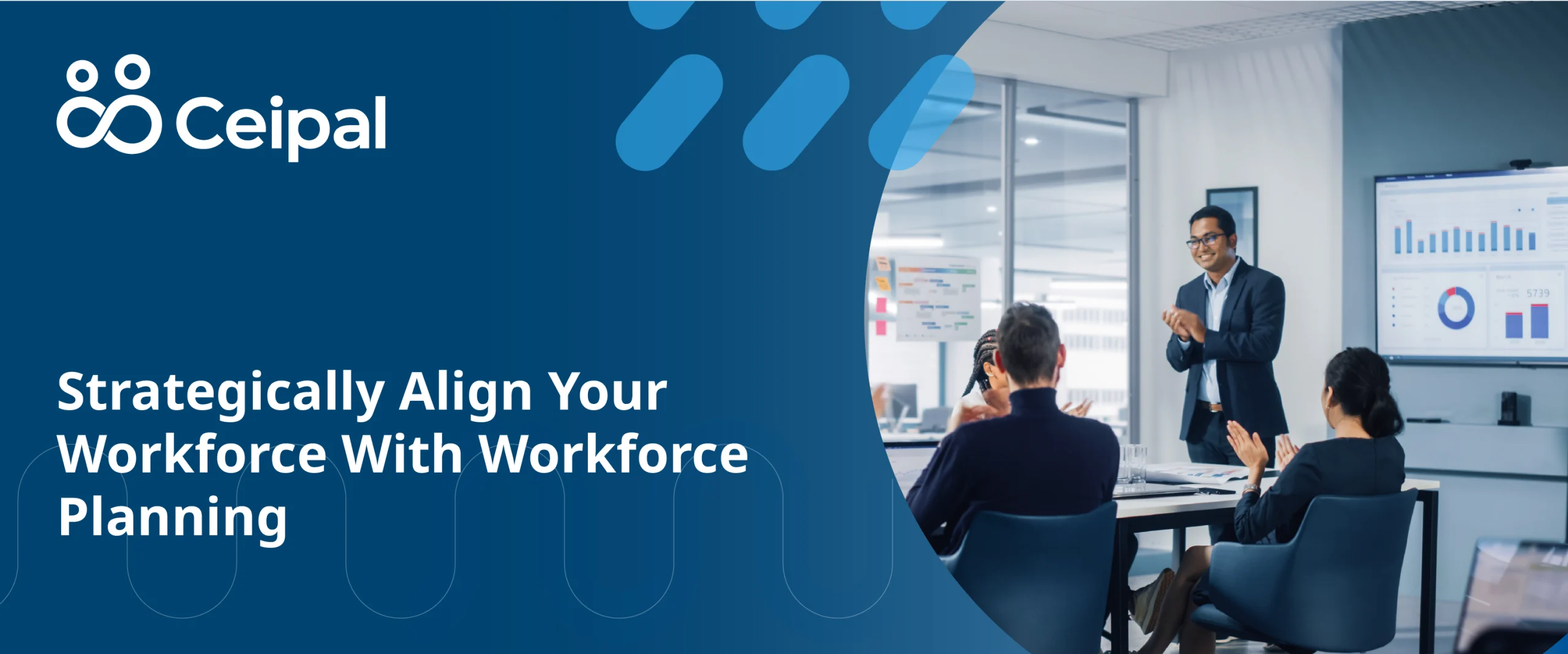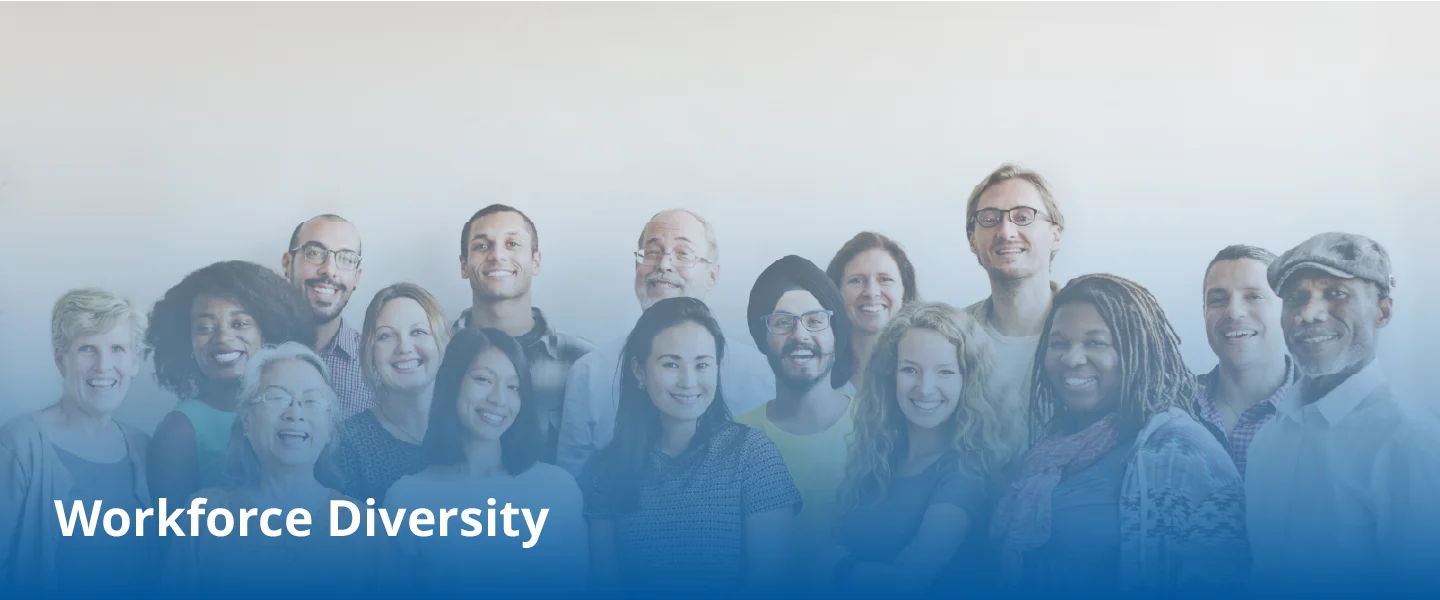In today’s rapidly changing business landscape, making informed decisions about hiring and talent acquisition is crucial for achieving organizational success. The process of strategic workforce planning is the key to ensuring that your workforce is aligned with your enterprise goals and equipped to navigate the challenges of the modern market.
Implement Effective Workforce Planning Solutions
To successfully implement strategic workforce planning, organizations need to follow a comprehensive process that integrates business strategy, talent analysis, and scenario preparation. Here are the essential steps to strategically align your workforce with workforce planning:
1. Align Business Strategy With Hiring Needs
The foundation of strategic workforce planning lies in aligning your hiring needs with your long-term and short-term business strategies. If your business strategy shifts due to factors like product launches or expansion into new markets, it’s important to review and adjust your strategic workforce plan accordingly. This step requires collaboration among various stakeholders, including HR, finance, line managers, and top executives.
By syncing your hiring strategy with your business objectives, you can proactively address talent gaps and ensure that your workforce is well prepared to execute the company’s goals.
2. Identify Future Talent Needs
Identifying the skills and competencies needed to support your business strategy is a critical step in strategic workforce planning. Begin by measuring the required skills against your internal and external talent pool. Next, project the staffing needs for different stages and timelines, considering factors like recruitment processes, onboarding, and notice periods.
Prioritizing roles and defining critical positions will help you allocate resources more efficiently. Leverage workforce analytics to gain insights into the current workforce composition, demographics, performance, and potential. This data-driven approach enhances your decision-making process and helps to focus your talent acquisition efforts.
3. Analyze the Talent Supply and Look for Gaps
Understanding your current internal workforce competencies and identifying potential gaps is essential for effective workforce planning. Demographic trends within your workforce can impact the availability of specific skills over time. Conducting a skill gap analysis helps you determine whether to upskill existing employees or bring in new talent.
Consider the impact of digitization and technology advancements on your workforce’s skill requirements. Collecting employee opinions through surveys provides insights into their satisfaction and can guide decisions regarding workforce adjustments.
4. Prepare for Different Scenarios
Flexibility and adaptability are crucial when preparing for the uncertainties of the future. Developing a tactical plan that outlines potential scenarios and responses is essential. Whether it’s industry-specific changes or unexpected economic shifts, having a framework in place helps you stay ahead of potential challenges.
Embrace technology and automation as you anticipate changes in job roles. By implementing a strategic workforce planning framework, you can proactively address attrition, upskilling, and re-skilling strategies to mitigate the impact of job transformations.
5. Create and Execute a Plan
Once you’ve identified talent needs and potential scenarios, create a comprehensive plan that outlines hiring costs, training investments, and timelines. This plan should involve all relevant stakeholders, from the C-suite to division managers. Factors such as turnover rates, skill adjustments, and personnel onboarding timelines should be considered to ensure the plan’s success. Don’t forget to maintain open communication with key stakeholders throughout the execution phase, providing regular updates and making adjustments as needed. Additionally, a backup plan for different scenarios will enhance your ability to respond effectively to unexpected challenges.
Monitor the Progress and Evaluate the Impact
As you execute your workforce plan, consistently monitor your progress and evaluate the plan’s impact on your organizational objectives with the following steps:
- Measure key metrics to track success and make necessary adjustments.
- Regularly update the plan based on industry changes and business shifts to ensure its relevance and effectiveness.
- Leverage software solutions like Oracle Cloud HCM for valuable insights and analysis of HR metrics.
- Reassess your business objectives and realign your workforce plan to remain agile and responsive.
Be Adaptable and Responsive in Your Planning
Strategically aligning your workforce with workforce planning is a dynamic process that demands a deep understanding of your business strategy and talent needs. Strategic workforce planning is an ongoing process that requires adaptability and responsiveness to ensure your organization’s continued success in a competitive business environment. By following these comprehensive steps, you can ensure that your organization is prepared to tackle challenges, optimize talent acquisition, and achieve its goals in a rapidly evolving business landscape.
FAQs
1. What is strategic workforce planning?
Strategic workforce planning is an analytics-driven process that ensures organizations acquire the right talent, at the right time, and in the right place. It aligns the workforce with business goals and enhances competitiveness in the global marketplace.
2. Why is strategic workforce planning essential?
Effective workforce planning prevents talent shortages and surpluses, enabling businesses to adapt to changing demands and stay competitive. It helps optimize talent acquisition and retention strategies.
3. How does technology impact workforce planning?
Technology, such as automation and digitization, can lead to changes in job roles. Strategic workforce planning helps organizations proactively address these changes through attrition, upskilling, and reskilling strategies.
4. How often should a workforce plan be evaluated?
Regular evaluation is crucial. Organizations should assess their workforce plan quarterly or monthly, adjusting it based on changing business objectives and industry trends.
5. What role does software play in workforce planning?
Software solutions like Oracle Cloud HCM provide data-driven insights, enabling organizations to track HR metrics, analyze workforce data, and create actionable reports for better decision-making.









